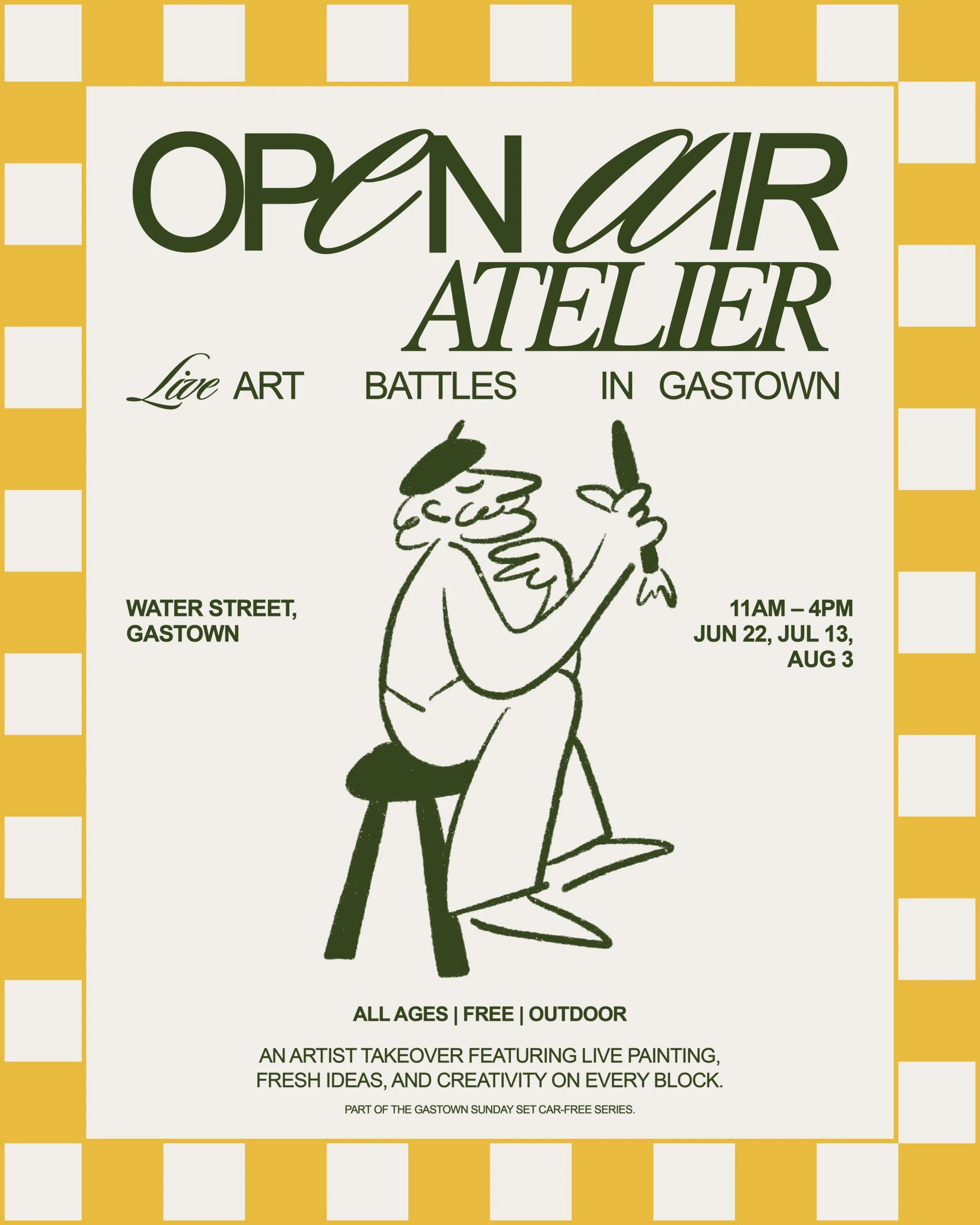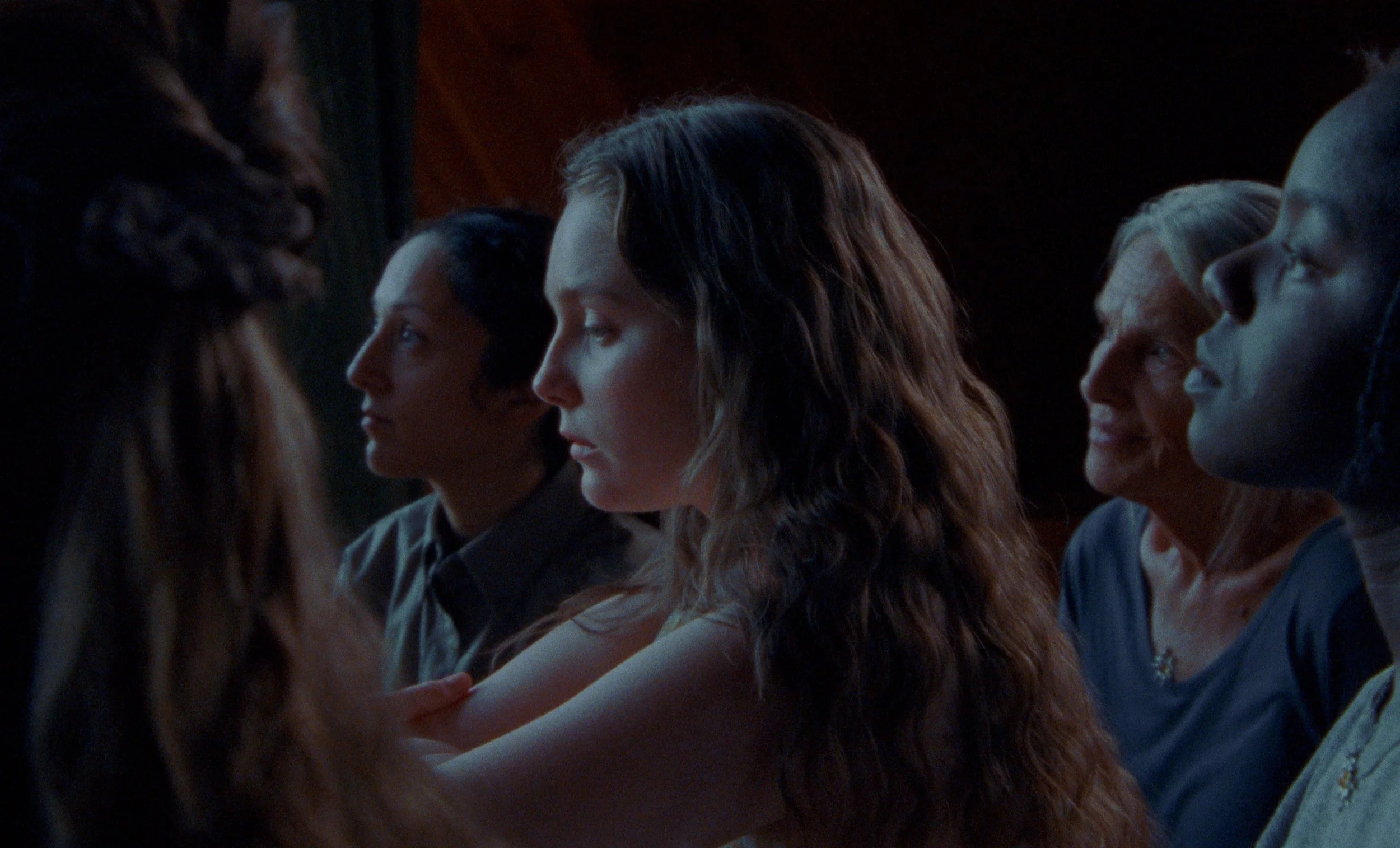Sell Out, A Series: 5 Questions with Anne SueYeun Seol
/Sell Out is a series by interdisciplinary artist Angela Fama (she/they), who co-creates conversations with individual artists across Vancouver. Questioning ideas of artistry, identity, “day jobs,” and how they intertwine, Fama settles in with each artist (at a local café of their choice) and asks the same series of questions. With one roll of medium format film, Fama captures portraits of the artist after their conversations.
Anne SueYeun Seol (she/her, Korean) is an artist and fun seeker. Follow her on Instagram @seols_sa.
Location: Lé Marche St. George
What do you make/create?
I make art, mostly multimedia right now. I’m mostly making graphics, because I’m in school for graphic design (at Emily Carr University of Art and Design), and it’s required, so most of my works are graphics and media design pieces rather than hands-on paintings. I’m in [in an announcer's voice] “Media Design” so I’m kind of [jokingly] “forced” to make those graphics, but I love the routine and the requirements that help me to create art, so it's a requirement I love.
During COVID, I mainly worked on videos on my laptop–animation, motion graphics–so I kind of forgot how to make hands-on art. After COVID, I finally got to come to Vancouver and be physically at school where I learned so many ways to make art with your hands–print making, ceramics, working with sewing machines and textiles–and I found it really interesting to go back to how I used to make tactile art. When I was a kid, I loved art, and I had no idea what I was doing. I was just making art, and I loved it without thinking anything like, “Oh, I’m going to put this in my portfolio!” Going back to hands-on art, being in studios, I felt like being a kid again. As a result, I’m transitioning in my work right now, and I’m trying to adapt these more analogue ways of making art into my practice.
What do you do to support that?
I have two day jobs. The first one is Blim, where I work in a retail screen printing shop, but I want to call it an art space and art community rather than a shop. I work there as general staff, someone who’s doing a bit of everything. My boss tells me I’m her “assistant” which I appreciate. The other job I got recently is at Purdy’s, the chocolate shop. I don’t really do a lot of different things there, I’m just selling chocolate, making ice cream cones. So, like, one day, I’m like a guide to an imaginary art world, and then another day, I’m an Oompa-Loompa from Willy Wonka.
Describe something about how your art practice and your “day job” interact.
I get most of my inspiration from children and the past, nostalgia, the times that are being forgotten or easily neglected. Like how when people think of old people they often don’t think of their history, or what they’ve been through, and I’m very interested in those often-ignored things; like how time works in a human’s life, what time does in a human’s life.
My two jobs are similar in a sense but very different I’d say. At Blim I mostly encounter young artists, where they are more open, they talk about everything. If I suggest to them, “Hey, do you want to grab a coffee?” they’d be like “Ya!” Whereas it’s kind of hard to do that at Purdy’s, right? That would be kind of weird! But at Purdy’s, I meet people of all ages; babies just born to people in their 90’s! All different backgrounds, all different settings. I don’t know where they come from, but they’re from everywhere. I think that’s really interesting, like every time I work there, I’m having lessons in human behaviors, communication, and I get to understand people better. It makes me think a lot about interactions. In my art practice, I try to bring human interactions and communication into my works.
One time, something interesting at Purdy’s happened when I was scooping ice cream. There’s a glass case over the ice cream to prevent customers from accessing the ice cream or ice cream bars, but when you’re lowering yourself to reach in and scoop, if you look a little up, there’s this little spot where you can see through and see the kids excitedly exclaiming, “Ahhh!” and “Oooh!” I was scooping without any thought, or putting in any effort–I’m trying to make it pretty but not really thinking about it–and they’re looking at me like I’m doing magic.
Their amazement, their excitement in their eyes – it kind of made me think about what I used to love. When was the last time I had those kinds of eyes for something that I loved like that? That kind of brings me back to art; to think of what I really love. Not just thinking about, “Oh, what am I going to do with this in the future?” because I was in that style of thinking that everything I do is connected to my future, “Oh I need to do something FOR my future. I am doing this project so I can put it in my portfolio.” Just that one moment made me think, “Oh, art wasn’t something like that to me before. How do I bring that back to my work?” I’m still in that space of thinking about it; it made me think of bringing that kind of joy and wonder, 100% excitement, not concerns or future worries, back to my work.
What’s a challenge you’re facing, or have faced, in relation to this and/or what’s a benefit?
Challenges. There’s a lot [laughs]. I have issues with time-management, and then I have two jobs. I get a lot of inspiration from my work, but I don’t really get time to create with that – I think you can, but then you’re not sleeping at all! That’s the most challenging part. And then I kind of forget about the challenges, because I’m the sort of person who forgets about everything that’s bad — or maybe I’m just great at selective memory. I try to just live my life in the moment.
For benefits, I go to Blim, because to me that’s more of an introduction to the professional art world. I’m learning about A-Z, from how to connect with people, how to work with artists/clients, how to talk with people, and how things are working. Just being in such a busy art venue is amazing, and you’re also working! Every conversation I have with my boss, Ziggy, is very helpful. Not just in my life as an artist, but my life in general. It’s my best work/art benefit.
Have you made, or created, anything that was inspired by something from your day job? Please describe.
I started Purdy’s recently, so I don’t have any work relating to those experiences just yet, but at Blim I get lots and lots of inspiration. There’s so much eye candy, so many interactions that make me want to do art! One example is: I had some clothes that didn’t fit me anymore, and I never thought of drawing on them because I was kind of old-fashioned, thinking you draw on paper, canvas, but I’d never thought to draw on clothes. I started making Instagram reels about how to paint on clothes; I drew and spray painted on pants and a suitcase. That’s definitely Blim inspired. Ziggy’s constant, “More! More! We can make it a lot more fun!” is always in my head. I try to everytime I’m drawing or doodling, to be more creative and just, fun.
Another time, when I had just started working at Blim, I had an assignment from school to make a zine about the land. Because I was having a lot of interactions with Ziggy and Blim customers from everywhere – some were DJ’s, some were artists, some were dancers – that was the only place for me to talk with people outside of my usual bubble. It made me think a lot about different neighbourhoods and if you put your ears and eyes a little closer to people, they have stunning stories. It made me interested in small one-person businesses, and I made a zine about local businesses around my neighbourhood (Kingsway and 33rd). For example, I interviewed the manager at the 2400 Motel. It was a really great practice that made me think more about community, and Blim was the first place that inspired me in that way.
I recently got a message on Instagram that a customer bought my zine from Jackson’s General Store and that her mom grew up in the Kingsway neighbourhood – she had moved and then came back and she was stunned by it because it brought back/is about places related to her old memories. When I was handing out the zine to people in the neighbourhood, they were like, “This is amazing!” and I love that; people connecting through my art. I’m all about human interactions.
Angela Fama (she/they) is an interdisciplinary artist, creator of the Death Conversation Game, photographer, and musician of mixed european descent currently living and working on the unceded traditional and ancestral territories of the Coast Salish xʷməθkwəy̓əm, Skwxwú7mesh and Səl̓ílwətaʔ/Selilwitulh Nations.
Follow them at IG @angelafama IG @deathconversationgame or on their website www.angelafama.com









